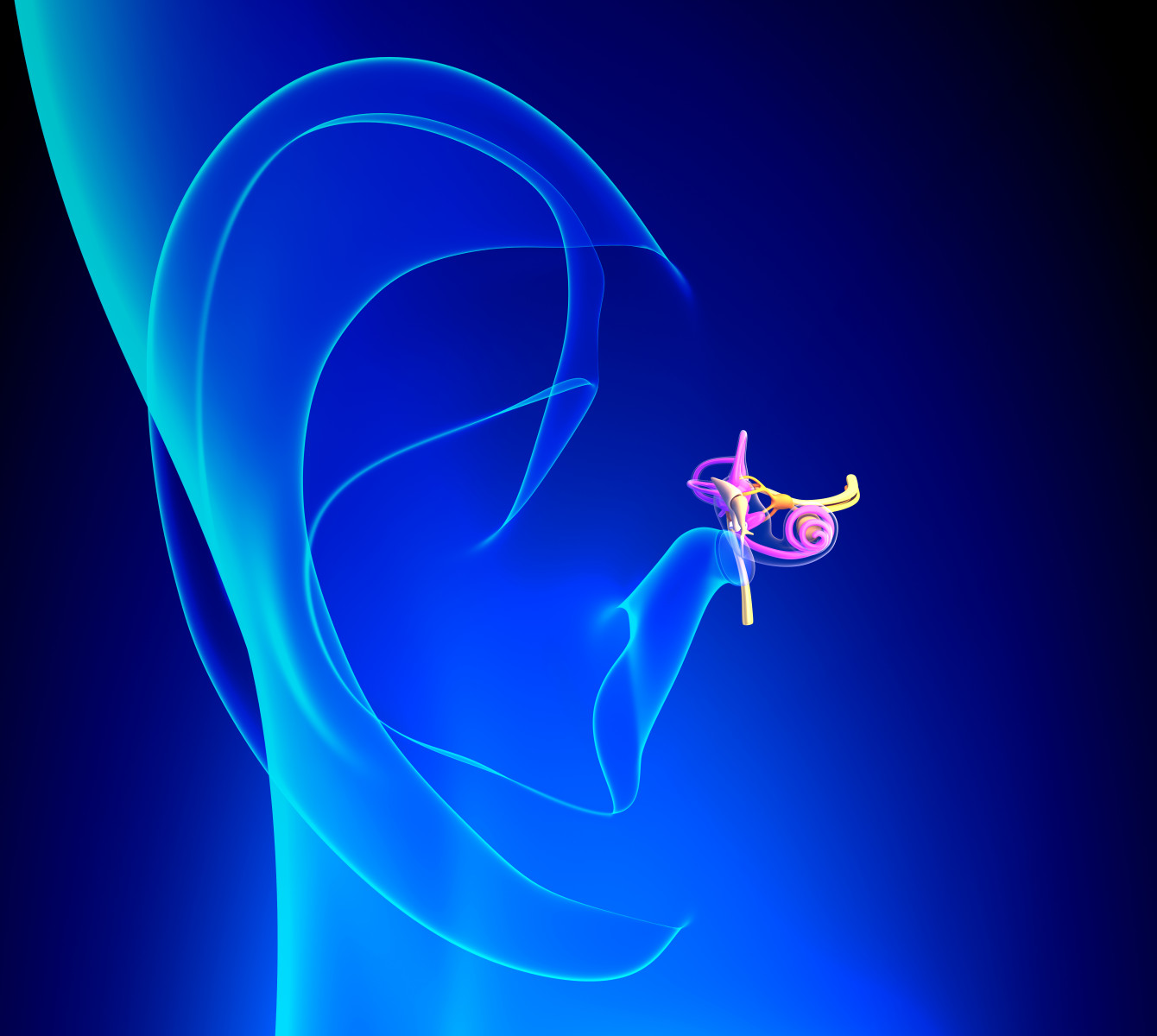Mouse Study Illuminates How TGFBR1 Mutations May Cause Hearing Loss Linked to vEDS
Written by |

Mutations in the TGFBR1 gene, the underlying cause of some cases of vascular Ehlers-Danlos syndrome (vEDS), may lead to hearing loss by preventing the formation of key sensory cells in the inner ear during development, a study in mice has found.
The research also provided key insights into the factors driving the formation of these sensory cells, which may be used to develop cell-based therapies that reverse hearing loss in some patients, including in those with vEDS.
The study, “Characterization of the development of the mouse cochlear epithelium at the single cell level,” was published in the journal Nature Communications.
The primary transducers of sound are hair cells, or cells with tufts of hair bundles that sense vibrations in the ear canal and translate them into electrical signals. These cells, found in a small region in the cochlea called the organ of Corti, have two distinct types — inner hair cells and outer hair cells, each sustained structurally and functionally by multiple types of supporting cells.
During development, both hair cells and supporting cells are thought to arise from a pool of identical prosensory cells, which proceed through several rounds of maturation that progressively originate the mature cells in the organ of Corti.
But the factors and genetic signature leading to differentiation into distinct cell types are not yet understood. Shedding light on this would help researchers understand the causes of hearing loss in some patients and develop therapeutic approaches to reverse this loss.
To better understand the process of cell differentiation in the organ of Corti, researchers at the National Institute on Deafness and Other Communication Disorders (NIDCD), part of the National Institutes of Health, set out to examine the genetic signature of single cells in this structure through several stages of development.
Led by Matthew W. Kelley, PhD, chief of the NIDCD’s Section on Developmental Neuroscience, the team investigated these cells in mice, beginning at 14 days of embryonic development, and then at embryonic day 16, first postnatal day, and seventh postnatal day.
Researchers used a very sensitive technology called single-cell RNA sequencing, which provides information on the genes that are being produced by a single cell at a given point in time. This has the ability to reveal complex and rare cell populations, including transient ones, that other approaches often fail to identify.
“There are only a few thousand hair cells in the cochlea, and they are arrayed close together in a complex mosaic, an arrangement that makes the cells hard to isolate and characterize,” Kelley said in a press release. “Single-cell RNA sequencing has provided us with a valuable tool to track individual cells’ behaviors as they take their places in the intricate structure of the developing cochlea.”
The team first mapped out the position of individual cells and determined which progenitor cells were giving rise to each type of hair cell and supporting cell. To their surprise, inner hair cells and outer hair cells were not arising from the same progenitor cells, potentially showing a distinct developmental pathway.
In fact, inner hair cells were formed from a kind of prosensory cell in the middle region of the cochlea, medial prosensory cells, which also originated two kinds of supporting cells called inner phalangeal cells and border cells.
In contrast, outer hair cells and the supporting cells of Deiters, which are located in a lateral region of the cochlea, were arising from a lateral pool of progenitor cells called lateral prosensory cells.
The team also compared the maturation state of inner and outer hair cells at the seventh postnatal day with cells found in adult animals. They found that while these cells were not yet fully mature, they already shared most of the genetic signatures of functional cells collected at later stages of development.
They then examined the role of the TGFBR1 gene, which is mutated in some cases of vEDS and in another connective tissue disorder called Loeys-Dietz syndrome. Both diseases are known to cause hearing loss.
The team found this gene in lateral prosensory cells as early as the 14th day of embryonic development, suggesting that TGFBR1 was important for initiating the formation of outer hair cells.
This was proven in a later experiment, in which investigators cultured a cochlea isolated at embryonic day 14.5 with an inhibitor of the TGF beta receptor type-1 protein for five days. By the end of treatment, there were fewer outer hair cells than seen in an untreated cochlea, because progenitors could not mature into outer hair cells.
They thus suggested that hearing loss in people with TGFBR1 mutations could be due to impaired outer hair cell formation during development.
“Unlike many other types of cells in the body, the sensory cells that enable us to hear do not have the capacity to regenerate when they become damaged or diseased. By clarifying our understanding of how these cells are formed in the developing inner ear, this work is an important asset for scientists working on stem cell-based therapeutics that may treat or reverse some forms of inner ear hearing loss,” said Debara L. Tucci, MD, NIDCD director and an otolaryngology-head and neck surgeon.
The team made their data available to others who focus on hearing loss and in inner ear development. The data is available through a web-based platform called gEAR, or gene Expression Analysis Resource.
“Single-cell RNA sequencing data are highly complex and typically require significant skill to access,” said Ronna Hertzano, MD, PhD, whose team at the Institute for Genome Sciences at the University of Maryland School of Medicine maintains the portal.
“By disseminating this study data via the gEAR, we are creating an ‘encyclopedia’ of the genes expressed in the developing inner ear, transforming the knowledge base of our field and making this robust information open and understandable to biologists and other researchers,” Hertzano added.


